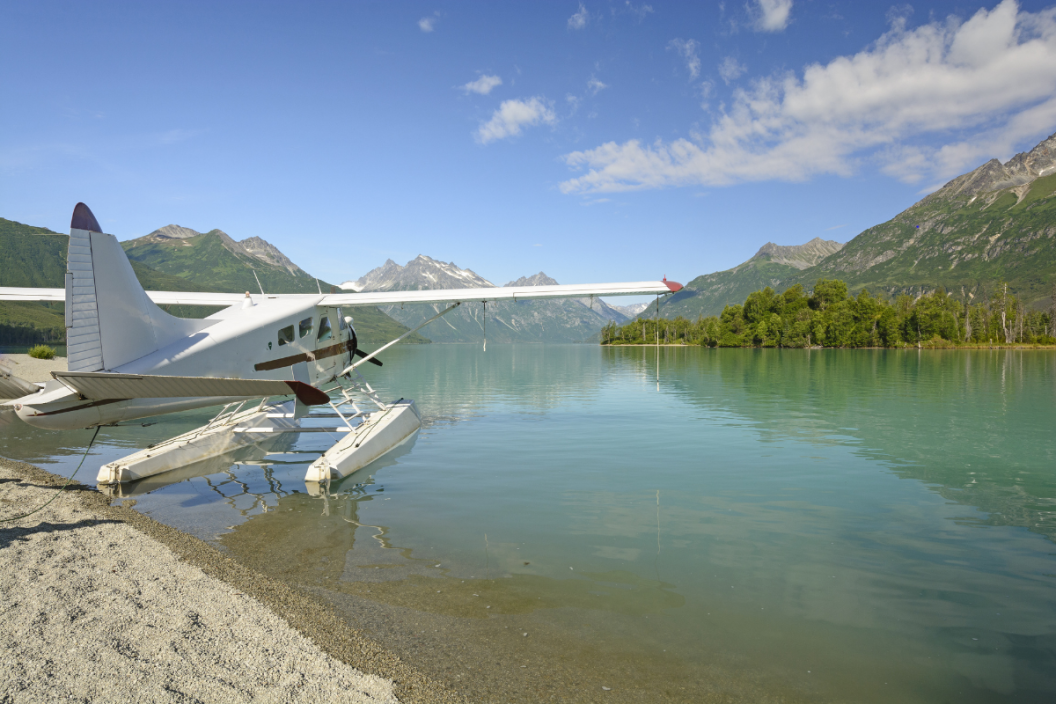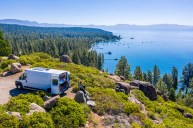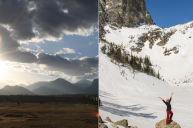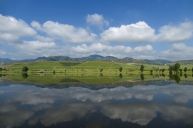If you really want to rough it in Alaska, head about 100 miles southwest of Anchorage to Lake Clark National Park and Preserve. Here on the other side of the Cook Inlet from the last bastions of U.S. civilization, you'll find some of the best outdoor experiences the Alaska Peninsula has to offer. Declared a national monument by President Jimmy Carter in 1978, the Lake Clark area has been a national park since 1980.
Full of varying ecosystems, this chunk of Alaskan backcountry is home to extreme environmental features like alpine tundra, and active volcanoes-not to mention some of the most impressive waterfalls and turquoise lakes in the U.S. has to offer.
Along with the Chigmit Mountains, the park includes a large chunk of the Aleutian Mountain Range. However, it doesn't extend into the Aleutian Peninsula. In fact, if you head that way, you'll find Katmai National Park and Preserve, which is better saved for another day.
Below you'll find vital information you need to plan a trip to Lake Clark National Park.
How to Get to Lake Clark National Park
https://www.instagram.com/p/B9AaHiul6Og/
There are several ways to get to the park, almost all of which require flying. Perhaps the easiest and most direct method is to take a flight from Anchorage to Port Alsworth Airport, which is located right on the shore of Lake Clark. Here you'll find the park's visitor center as well as other amenities.
Similarly, air taxis flying out of cities like Homer and Kenai are options, especially if you want to be dropped off in, or lifted out of, remote areas. Meanwhile, if you're interested in jumping around to different fishing spots, you might consider chartering a floatplane.
Finally, boating into the park from the Kenai Peninsula area is also an option. Once in the park, there are a handful of ways to get around, depending on seasonal conditions.
To be sure: there are no roads that lead to Lake Clark National Park.
Things to Do in Lake Clark National Park
https://www.instagram.com/p/CMNnzLsrmjt/
RELATED: Dispersed Camping is the Best Vacation You'll Ever Take
- Wildlife viewing: While birdwatchers will be happy to know they can find over 180 species of birds in the park, most will be surprised by how dedicated Lake Clark is to bear viewing. Both black and brown bears can be seen at different times at sites, including Chinitna Bay, Crescent Lake, and Silver Salmon Creek. Beyond brown and black bears, the park is teeming with other large mammals like moose and caribou. For more information, visit the National Park Service's website at www.nps.gov.
- Hiking and Biking: Just like bears, fish, and everything else the park has to offer, it also hosts miles of trail. Where day hikes are concerned, The Tanalian Trails that start in Port Alsworth range from moderate to rugged but are still very accessible for every day outdoor enthusiasts.
- Backpacking: There are quite a few routes to choose from, highlighting different aspects of the park. Biking is also an option, whether you're just heading out for the day or plan on finding a place to set up camp overnight. Ultimately, many people blaze their own way through the park, regardless of trails.
- Boating: The park is an excellent destination for kayaking, canoeing, and rafting, whether you're an angler looking for something calm and relaxing or a thrill-seeker on the hunt for new rivers to tame.
- Fishing: There's a whole mess of fish to be caught in Lake Clark National Park. One reason bear viewing is such a big deal at the park is that the salmon run drives the big galoots nuts. Fisherfolk of every skill level has a good chance of pulling sockeye salmon, grayling, and more out of the park's pristine waters.
Camping and Lodging in Lake Clark National Park
https://www.instagram.com/p/B4DxBLZICFk/
Lake Clark has ample accommodations, including both public and private options. You have rustic campgrounds, cozy cabins, and resort-like lodges on the public end, all of which you can see on the nps.gov website.
Where private overnighting is concerned, there are several places to stay across the park, from the Redoubt Lodge on Crescent Lake to the Windsong Wilderness Retreat at Upper Twin Lake, to name a couple. These lodges are all located on private land within the park and aren't run by the NPS.
Finally, although the park has established campgrounds, dispersed camping is a smart option. Just as with hiking and backpacking, the NPS expects visitors to enjoy the park's off-the-grid splendor when camping.
No matter where you stay, please be sure to follow proper protocols to secure food and other belongings from wildlife, particularly bears.
When to Go to Lake Clark National Park
https://www.instagram.com/p/B2jlTuzDAoh/
This is Alaska we're talking about, so you might be surprised to learn the park is open 24 hours a day, year-round. Of course, most people frequent the park between June and October when established services are staffed and running. But as long as you're a friend to cross-country skiing, you'll be at home in Lake Clark National Park any time of year.
Have any tips or tricks when it comes to visiting Lake Clark National Park? Let us know your secrets on our Wide Open Roads Facebook!




